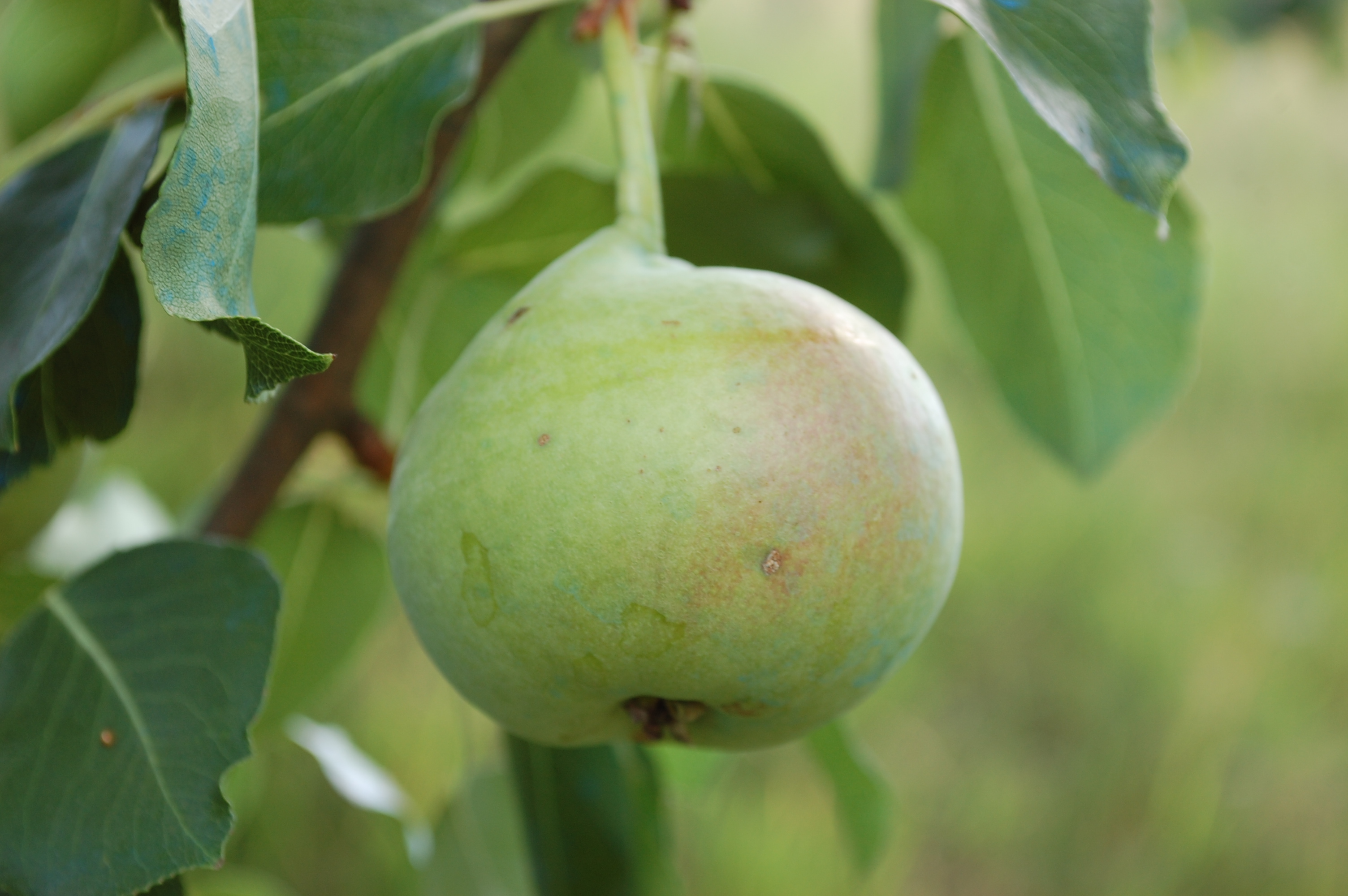︎︎︎ PERA VERDACCHIA

La pianta madre è stata ritrovata nel comune di Pieve S. Stefano (AR). Di origine sconosciuta, non se ne conoscono altre piante in quest’area. L’albero è mediamente vigoroso e rustico, a portamento espanso con produzione alternante. l frutto è medio grande, di forma globosa molto appiattita, quasi maliforme. Il peduncolo è medio e grosso, inserito in una cavità poco profonda. La buccia è spessa di colore verde con lenticelle diffuse rugginose. La presenza di ruggine è anche in buona parte del frutto. La cavità calicina è aperta e poco profonda. La polpa è bianco verdastra, molto succosa, con granulosità media, zuccherina e di ottima qualità. Viene raccolta a settembre, per il consumo immediato o da composta.
Il nome viene sia dal colore della buccia che della polpa. E’ un ottima pera da crostata e da torte, da sciroppare nel vino e da conservare nell’aceto. Si può anche essiccare al forno, a fette non troppo fine, in tre intervalli con temperature crescenti ma tempi sempre più brevi. Le fette si conservano in sacchetti di cotone, in luogo arieggiato e asciutto.
The mother plant was recovered in the area of Pieve Santo Stefano (Arezzo). Its origin is unknown and no other specimens of this variety were found. The tree is moderately vigorous and hardy, with spreading habit and alternate cropping. The fruit is medium-large, globe-shaped and very flattened, almost malformed. The stem is of medium length and thick, inserted in a slightly deep cavity. The calyx is open and not too deep. The skin is thick, green, with widespread russeted lenticels. Russeting is also on a good part of the fruit. The skin is white-greenish, very juicy and moderately granular. It is sugary and of very good quality. It is harvested in September, for immediate consumption or for compotes. The name comes both from its skin and its flesh color. It is a very good pear to make crostate and pies, to reduce in syrup and to preserve in vinegar. It can also be dried in the oven, in moderatly thin slices, in three intervals of increasing temperatures but decreasing time lengths. The slices can be preserved in small cotton bags in well-ventilated and dry rooms.